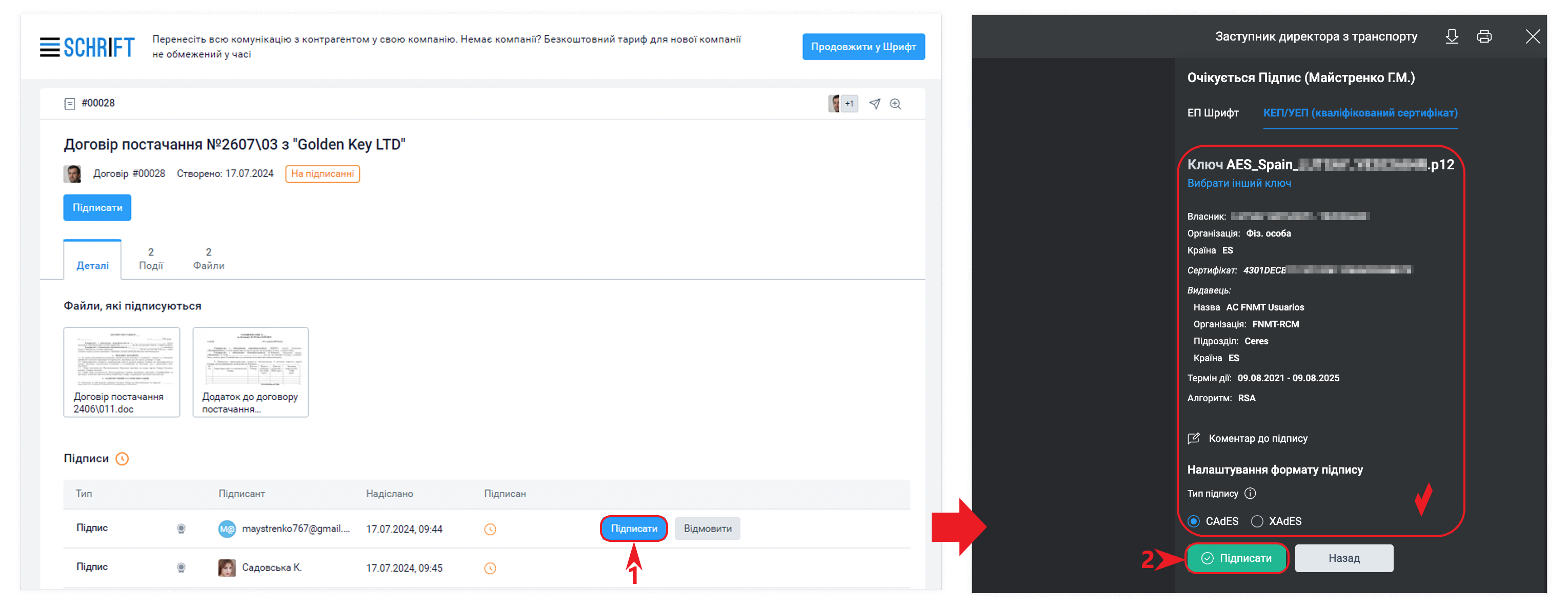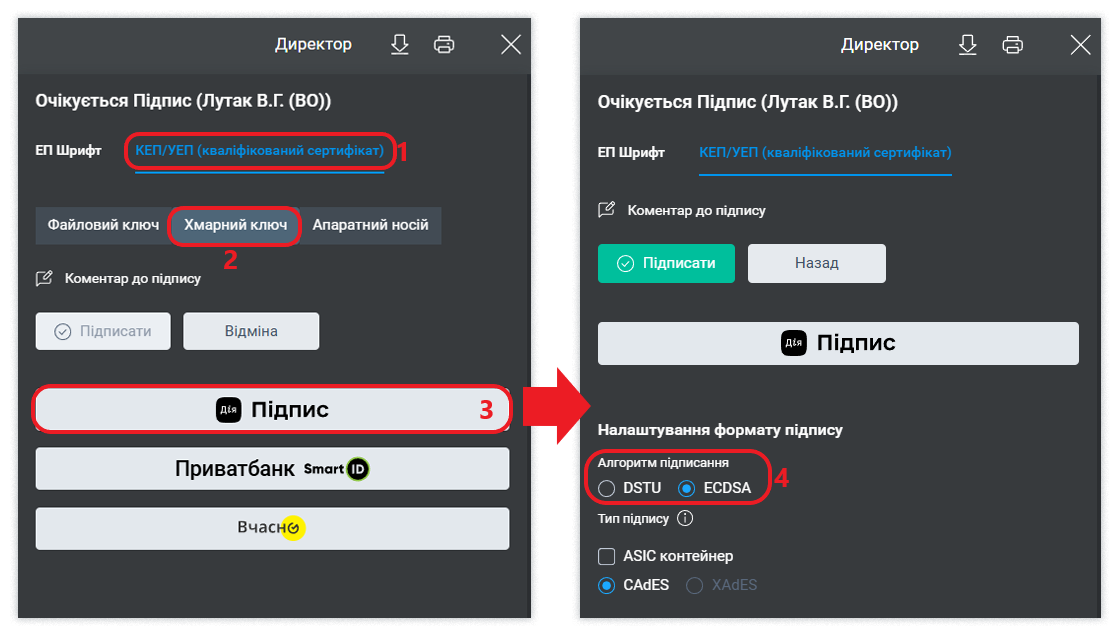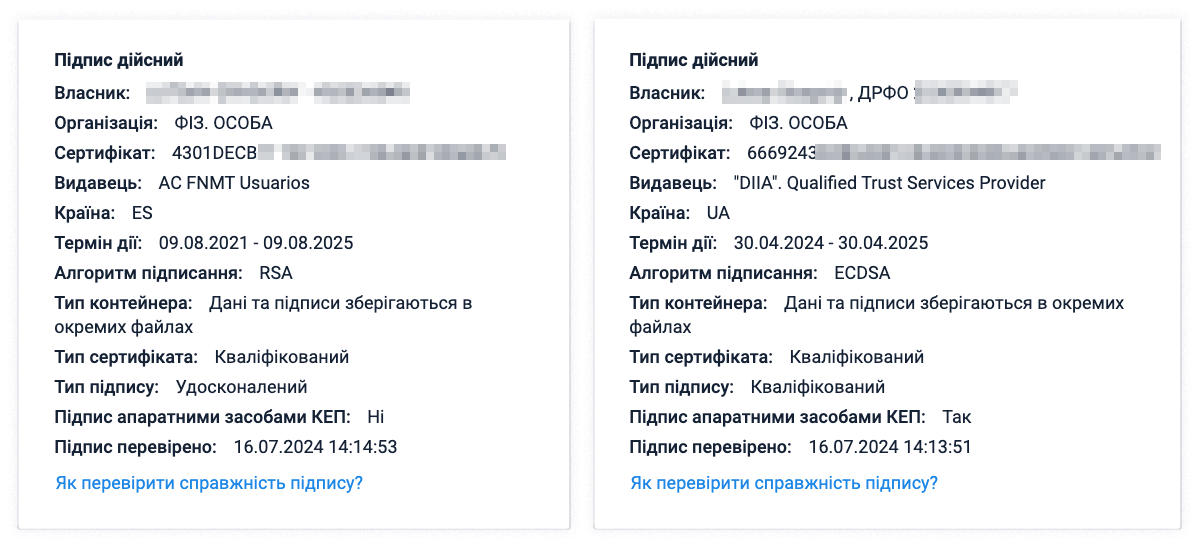European QES / AES
In the Schrift system, you can sign documents with European partners using both Ukrainian and European electronic signatures based on a qualified certificate and using ECDSA or RSA algorithms.
Legal status
The legal basis for the use of European QESs in Ukraine and Ukrainian QESs in the EU is an agreement signed between the EU and Ukraine. The European Commission's website confirms the use of electronic signatures issued in Ukraine.
The most important law of Ukraine on this topic is the Law of Ukraine ”On Electronic Identification and Electronic Trust Services”, in which clause 6(1) of section VII (Final and Transitional Provisions) contains regulation of the use of European QES in Ukraine.
Ukraine is currently the first and only country outside the EU to agree with the EU on mutual recognition of electronic trust services in 2022. This has opened up the possibility of using European ESDs in Ukraine and Ukrainian ESDs in the European Union.
Signing a document
Signing documents with European partners on the same platform makes it faster and more convenient to approve documents. To sign a document with a counterparty with an EU electronic signature, you need to send them a document for signature and indicate that you expect them to sign with a QES.

Your partner from the EU can sign the document for free, even without creating an account, in the system's guest interface.
If you communicate with your counterparty in the Schrift system, they will receive the document in their company account as soon as you send it.
If the counterparty does not have an account in the system, they will be able to sign the document in the guest interface. The system will send an email with a link to the document to the contact's email. If the email address is not in the contact's data, you can copy the link and send it to the contact in any convenient way: via messenger, etc.

The EU does not use the DSTU signing algorithm, which is used in most key certificates issued in Ukraine. Therefore, the Ministry of Digital Transformation recommends using Ukrainian QESs with an international certificate, such as Diia.Signature.
When signing a document with a QES, you need to choose the ECDSA signing algorithm used in the European Union.

Diia.Signature complies with the eIDAS regulations of the European Union. Documents signed with this signature are valid both in Ukraine and in the EU countries. In order for the signed document to be validated in the EU, you need to specify the ECDSA algorithm before choosing the Diia.Signature signature option.
You can generate such a signature in the Diia mobile application (Google Play and Apple Store). To register in the Diia app, you must have at least one biometric document in Diia: ID-card or passport, or log in with another QES or through a bank. Diia will provide a qualified electronic signature for free in two versions: according to the Ukrainian and international standards. Diia.Signature is already used by more than 20 million Ukrainians!
Ready-made signatures (QES) can be imported into the document that were created (delivered) on any other resource. Such a signature will be displayed in the document and will be checked for validity both within the system and on external resources, just as if it had been created within the system. Read more about importing signatures in this article.
Verifying the validity of a signature
Both you and your counterparty can verify electronic signatures within the system or through official resources, such as czo.gov.ua and ec.europa.eu.

Until the mutual recognition of Ukrainian and European QESs, there is a procedure in place that allows for the recognition of Ukrainian QESs in the EU and European QESs in Ukraine as improved. They are lower in terms of credibility, but also have the force of evidence in European and Ukrainian courts.
